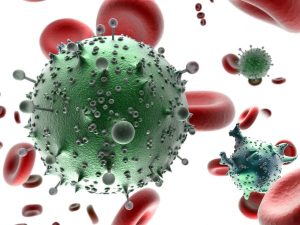Biophotonic technology plays a key role in providing the most effective, lowest-cost approaches for diagnosing, treating, and preventing disease and maintaining a healthy U.S. citizenry.
The discipline of biophotonics deals with the interaction of light, or electromagnetic radiation, with living organisms and biologically active macromolecules: proteins (hemoglobin), nucleic acids (DNA and RNA), and metabolites (glucose and lactose). Light interacts with biological material and organisms in many diverse ways, depending primarily on the energy or color of the photon. At both high (x ray) and low (radio frequency [RF]) energies the body is mostly transparent, thus allowing the non-invasive imaging of the internal structure of organs and bones. In contrast, certain colors or wavelengths in the infrared (IR) and ultraviolet (UV) regions are absorbed strongly by biological tissues. The intense, focused light of lasers with these colors can be used for a wide variety of unique therapeutic interventions: making incisions, cauterizing and sealing wounds, and selectively heating or even vaporizing specific regions of organs and tissues. In the visible region of the spectrum, some biologically active macromolecules naturally absorb specific photon energies or colors. 
Advances in photonics and developments in the field of biophotonic technology has created many opportunities for significant improvements in the quality of health care as well as for substantial reductions in overall cost.
Ensuring the precision lens being used in biophotonic technology is where the team of experts at UKA come in. We design and create the lens to meet the exact specifications for each individual piece of equipment.
Rapid and sensitive detection of proteins, antibodies, and pathogens in biological samples has broad applications in the prognosis and treatment of several diseases including immune response for infectious diseases, cancer, and cardiovascular disease. Furthermore, rapid and sensitive detection of pathogens and infectious agents at the point-of-care is essential for diagnosis, microbial forensics, and public health. More specifically, detecting HIV (human immunodeficiency virus) in biological samples is critical for HIV detection and treatment monitoring in resource-constrained settings.
In relationship to HIV, a team of researchers from the Spanish National Research Council (CSIC; Madrid, Spain), have developed and patented an optical biosensor that is able to detect the virus a week after being infected, with a total test time of 4 hours and 45 minutes thereby allowing clinical results to be obtained on the same day.
The biosensor combines micromechanical silicon structures with gold nanoparticles, both functionalize with p24-specific antibodies. The gold nanoparticles have optical resonances known as plasmons, which are capable of scattering light very efficiently. Micromechanical structures are excellent mechanical sensors capable of detecting interactions as small as intermolecular forces. The combination of these two structures produces both mechanical and optical signals that amplify one another, producing remarkable sensitivity to detect the p24 (protein marker for HIV).
Detecting and quantifying biomarkers and viruses in biological samples have broad applications in early disease diagnosis and treatment monitoring. It has been demonstrated that a label-free optical sensing mechanism using nanostructured photonic crystals (PC) can capture and quantify intact viruses (HIV-1) from biologically relevant samples.
Just as the microscope was the key to technology allowing discoveries in microbiology, optics and biophotonics has been essential technology leading to a dramatic increase in life expectancy.
Universe Kogaku designs and manufactures optical lenses for biophotonic technology, security, high tech and electronic applications. We stock 1000’s of standard lens assemblies and can custom design a solution for scanners, CCTV, CCD/CMOS, medical imaging, surveillance systems, machine vision and night vision systems.